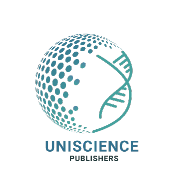Article / Review Article
Head of Holistic Center, 13 Haupt St., Abtwil 9030, Switzerland.
Manfred Doepp,
Head of Holistic Center,
13 Haupt St., Abtwil 9030,
Switzerland.
5 March 2025 ; 20 March 2025
The lymphatic drainage of the brain was under discussion up to 15 years ago. Then the glymphatic system was discovered, which ensures the drainage of waste products and toxins to the lymphatic system of the head. We have asked ourselves what problems from the mouth can weaken or block this drainage. In the mouth there are a number of toxin-producing processes that overload the lymphatic system. The most important issue appears to be that of osteolysis of the jawbone (NICO, FDOC), which increases the cytokine RANTES, with enzyme inhibition in the organism and especially in the brain. By means of adequate diagnostics (Rantes level in blood) and therapy (vibration of the head, and over all, extirpation of the foci in the jawbone), we were able to normalize many processes, e.g. in the brain.
Keywords: Glymphatic system, Detoxification of the brain, Foci in mouth and jawbone, Stressed brain.
At present, we are experiencing increasingly frequent brain problems. These also have to do with coagulation disorders and tenacious blood caused by Covid-19 viruses and spike proteins. What is usually neglected are the problems caused by toxins in the mouth area and the resulting problems with the lymphatic drainage of the head in the context of stress on the glymphatic system.
Until about 15 years ago, lymphatic drainage of the brain was unknown. The glymphatic system is a disposal system for waste products in the central nervous system of vertebrates, i.e. in the brain and spinal cord. The name is a neologism of the terms glia and lymphatic system and was introduced by a research group led by Maiken Nedergaard (Rochester and Copenhagen, Bohr et al., 2022; Hablitz & Nedergaard 2021; Rasmussen et al., 2022; Lohela et al., 2022). Similar to the lymphatic system, which ends outside the meninges and does not occur in the central nervous system, the glymphatic system acts as a flowing circulation system for the removal of metabolic end products and toxins.
The oral system should be free of toxins so that the lymphatic system is not stressed by dentogenic toxins and the glymphatic system is not overloaded or even blocked. As a result of an overload, central nervous system toxins can no longer be adequately removed and accumulate in the brain. This problem and this know-how are largely unknown. Dentists and doctors (e.g. neurologists) hardly work together in this regard.
- Metals: i.e. heavy metals, in amalgam (mercury, silver etc) and dental gold (palladium, platinum etc); i.e. light metals in implants (titanium etc). They are all toxic, especially for the brain.
- Chronic bacterial inflammation of the gingiva and/or gums, especially hidden gangrenous stomatitis, pulpitis, and periapical granuloma findings. The starting point is often inadequate root canal treatment, in which dead tissue and germs remain in the root canals. According to insiders, around 80% of these treatments are insufficient. Periapical granuloma, also sometimes referred to as a radicular or apical granuloma, is an inflammation at the tip of a dead (nonvital) tooth, resulting in inflammation of granulation tissue at the root Tips of a dead tooth.
- Jaw bone foci in the sensé of non-infections chronic (usually fatty degenerative) jaw ostitis : NICO, FDOC. Chronic siftening of the jawbone is a phenomenon that is still not recognized by many areas of medicine and dentistry, or at least ist health effects are not taken seriously. These « jaw inflammations » were described by the American pathologist Prof. Bouquet as « neuralgia inducing cavitational osteonecrosis ». (Bouquot et al., 1992; Bouquot & Christian, 1995; Bouquot & Roberts, 1992) NICO is a deficiency in the form of a metabolic disorder that leads to fatty degenerative bone dissolution. NICO usually presents as fatty lumps thar are easily spooned out of the medullary canal of the jawbone. These degenerated fat cells in NICO areas produce inflammatory messengers (cytokines/chemokines like RANTES that affect other organs where they can be associated with breast cancer, Hashimoto`s, multiple sclerosis, etc. (Lechner & Herd, 1993; Lechner, 1999).
- Periodontitis and gum pockets filled with problematic pathogens. The tooth is anchored in the tooth socket by gomphosis, i.e. a tooth is only suspended in its bone socket via the Sharpey fibers and is not firmly fused to it. There is therefore a natural gap (= periodontal gap) between the tooth and the bone, in which the Sharpey fibers and periodontal ligament are located. Bacteria can penetrate this gap. Especially those that feel very comfortable in this environment (= obligate anaerobes) multiply and lead to inflammation in which the Sharpey fibers are damaged. The periodontium recedes and inflammatory niches, known as periodontal pockets, develop in the periodontal gap, which can repeatedly and acutely fill with pus.
Toxins are produced by bacterial colonization in the jawbone and are increasingly found in the NICO area. These processes cannot be visualized by usual X-ray. What effects do the toxins have? They can lead to a significant inhibition of vital enzymes in the cell and thus to mitochondriopathy, which is now considered by many researchers to be a key factor in the development of cancer. This makes the foci in the jawbone important for chronic diseases – although X-rays do not allow a reliable diagnosis to be made. This leads to the holistic conclusion that even if no dead/root-filled teeth are present, systemic sensitization of the immune system by mercaptans/thioethers from NICO areas should be investigated, see figure1.
 Figure 1: Opened fatty degenerative osteolysis (NICO) in the area of the lower left wisdom tooth (Doepp M., 2021)
Figure 1: Opened fatty degenerative osteolysis (NICO) in the area of the lower left wisdom tooth (Doepp M., 2021)
NICO (non-specific chronic inflammation of the jawbone) is a chronic inflammation in the jaw that often goes undetected. It causes constant stress for the immune system and is thus a contributing factor in a variety of chronic diseases. In most cases, It is painless and shows no local signs of inflammation, and is thus often not noticed, party because it cannot be reliably diagnosed by conventional X-ray diagnostics. A non-calcific degenerative osteolysis in the jaw (NICO) is only negligible in terms of health as long as no chronic health problems are present. At the latest, however, when any kind of chronic disease sets in, and regardless of the symptoms, it is important to eliminate (long-term) immunological stress as much as possible in order to optimize the body’s own self-healing powers.
CCL5 (CC-chemokine ligand 5) is a cytokine from the CC chemokine family. Properties : CCL5 is involved in inflammatory processes. CCL5 is produced by cytotoxic T cells, among others, and binds T cells, monocytes and eosinophils by binding the receptors CCR3, and CCR1. CCL5 activates the GPCR GPR75. (Lechner, 2010; Daugherty et al., 1996; Struyf et al., 2001; Slimani et al., 2003; Proudfoot et al., 2001).
As a result of those disorders, the brain cannot detoxify itself sufficiently and accumulates toxins. Different brain diseases can be triggered depending on the individual`s previous exposure. In the preliminary stages, there is the phenomenon of « brain fog » with symptoms such as dizziness, concentration problems and fatigue. Later dementia or Alzheimer`s follow. (Ignatov et al., 2006; Doepp M., 2022).
In case of a perforated blood-brain-barrier (by means of electro-smog) the metals can penetrate in to the brain and accumulate in the glands of the brain. After intensive dental diagnostics with digital computer tomography and ultrasound (Capitaux), we have regularly found dentogenic and jaw findings, and improvements in symptoms after treatment. The usual X-ray is insufficient. (Doepp M., 2022 ; Doepp M., 2022).
These examinations should be carried out in all cases where there are unclear brain-related problems. However- as mentioned – also severe diseases far from the brain (like breast cancer) can be connected and react positively on the removal of the dental focus.
The brain needs its glymphatic system for detoxification, which drains the toxins into the lymphatic system of the head. This lymphatic system is stressed by toxin-producing processes in the mouth area to the point of blockage. Afterwards the glymphatic system is overloaded. A large number of foci and toxins in the mouth area are capable of doing this. The most important are fatty osteolyses in the jawbone (NICO, FDOC). NICO (non-specific chronic inflammation of the jawbone) is a chronic inflammation in the jaw that often goes undetected. It causes constant stress for the immune and the lymphatic system and is thus a contributing factor in a variety of chronic diseases (Doepp M., 2021).
- Bohr, T., Hjorth, P. G., Holst, S. C., Hrabětová, S., Kiviniemi, V., Lilius, T., Lundgaard, I., Mardal, K. A., Martens, E. A., Mori, Y., Nägerl, U. V., Nicholson, C., Tannenbaum, A., Thomas, J. H., Tithof, J., Benveniste, H., Iliff, J. J., Kelley, D. H., & Nedergaard, M. (2022).The glymphatic system : Current understanding and modeling. in Science, 25(9), 104-987. DOI: https://doi.org/10.1016/j.isci.2022.104987
- Hablitz, L. M., & Nedergaard, M. (2021). The glymphatic system. Curr Biol, 31(20), R1371-R1375. DOI: https://doi.org/10.1016/j.cub.2021.08.026
- Rasmussen, M. K., Mestre, H., & Nedergaard, M. (2022). Fluid Transport in the Brain. Physiological Reviews, 102(2), 1025-1151.
DOI: https://doi.org/10.1152/physrev.00031.2020 - Lohela, T. J., Lilius, T. O., & Nedergaard, M. (2022). The glymphatic system: implications for drugs for central nervous system diseases. Nat Rev Drug Discov , 21(10), 763-779. DOI: https://doi.org/10.1038/s41573-022-00500-9
- Bouquot, J. E., Roberts, A. M., Person, P., & Christian, J. (1992). Neuralgia-inducing cavitational osteonecrosis (NICO): Osteomyelitis in 224 jawbone samples from patients with facial neuralgia. Oral Surg Oral Med Oral Pathol, 73(3), 307-319. DOI: https://doi.org/10.1016/0030-4220(92)90127-c
- Bouquot, J. E., & Christian, J. (1995) : Longterm effects of jawbone curettage on the pain of facial neuralgia. J Oral Maxillofac Surg, 53(4), 387-397. DOI: https://doi.org/10.1016/0278-2391(95)90708-4
- Bouquot, J. E., Roberts, A. (1992). NICO (neuralgia-inducing cavitational osteonecrosis): radiographic appearance of the „invisible“ osteomyelitis. Oral Surg Oral Med Oral Pathol, 74, 600.
- Lechner, J. Herd, B. (1993). Regulation und Information – Störfelder im Zahn-, Mund- und Kieferbereich. (1st edition). HÜTHIG Verlag Heidelberg.
- Lechner, J. (1999). Störfelder im Trigeminusbereich und Systemerkrankungen: Ein systemisches Sanierungskonzept für Zahn-Störfelder, (1st edition). Verlag für Ganzheitliche Medizin. https://www.amazon.de/-/en/St%C3%B6rfelder-Trigeminusbereich-Systemerkrankungen-Johann-Lechner/dp/3927344478
- Lechner, J. (2010). NICO – Ist fehlende röntgenologische Evidenz Beweis fehlender klinischer Existenz? ZWR – Das Deutsche Zahnärzteblatt, 119(10), 578-592. DOI: http://dx.doi.org/10.1055/s-0030-1270284
- Daugherty, B. L., Siciliano, S. J., DeMartino, J. A., Malkowitz, L., Sirotina, A., & Springer, M. S. (1996). Cloning, expression, and characterization of the human eosinophil eotaxin receptor. J. Exp. Med, 183(5), 2349–54. DOI: https://doi.org/10.1084/jem.183.5.2349
- Struyf, S., Menten, P., Lenaerts, J. P., Put, W., D’Haese, A., De Clercq, E., Schols, D., Proost, P., Van Damme, J. (2001). Diverging binding capacities of natural LD78beta isoforms of macrophage inflammatory protein-1alpha to the CC chemokine receptors 1, 3 and 5 affect their anti-HIV-1 activity and chemotactic potencies for neutrophils and eosinophils. Eur. J. Immunol. 31(7), 2170–8. DOI: https://doi.org/10.1002/1521-4141(200107)31:7%3C2170::AID-IMMU2170%3E3.0.CO;2-D
- Slimani, H., Charnaux, N., Mbemba, E., Saffar, L., Vassy, R., Vita, C., & Gattegno, L. (2003). Interaction of RANTES with syndecan-1 and syndecan-4 expressed by human primary macrophages. Biochim. Biophys. Acta. 1617(1–2), 80–8. DOI: https://doi.org/10.1016/j.bbamem.2003.09.006
- Proudfoot, A. E., Fritchley, S., Borlat, F., Shaw, J. P., Vilbois, F., Zwahlen, C., Trkola, A., Marchant, D., Clapham, P. R., & Wells, T. N. (2001). The BBXB motif of RANTES is the principal site for heparin binding and controls receptor selectivity. J. Biol. Chem. 276(14), 10620–6,
DOI: https://doi.org/10.1074/jbc.m010867200 - Ignatov, A., Robert, J., Gregory-Evans, C., & Schaller, H. C. (2006). RANTES stimulates Ca2+ mobilization and inositol trisphosphate (IP3) formation in cells transfected with G protein-coupled receptor 75. Br. J. Pharmacol. 149(5), 490–7. DOI: https://doi.org/10.1038/sj.bjp.0706909
- Doepp M., (2022). Topic: Mouth, Teeth, and Dentition. Journal of Advances in Bioengineering and Biomedical Science Research (ISSN: 2640-4133), 5(3), 186- 187. https://www.opastpublishers.com/open-access-articles/topic-mouth-teeth-and-dentition.pdf
- Doepp M., (2022). Re-print-Significant Findings in Tooth Roots and Jaw Bones Can Cause Serious Diseases. Clinical Research and Clinical Trials, 6(1). DOI : http://dx.doi.org/10.31579/2693-4779/100
- Doepp M., (2022). Could Dentistry Be a Major Factor in Human Poisonings? IOSR Journal of Dental and Medical Sciences, (IOSR-JDMS), 21(3), 48-49.
DOI : 10.9790/0853-2103104849 - Doepp M., (2021). Our Brains are Targets No. 1, Cleared for Firing – an Overview. American Journal of Biomedical Science & Research, 14(3),
DOI: http://dx.doi.org/10.34297/AJBSR.2021.14.001986 - Dguht. (n.d.). FDOK – the hidden inflammation in the jawbone. https://www.dguht.de/blog/fdok-die-versteckte-entzuendung-im-kieferknochen/.













